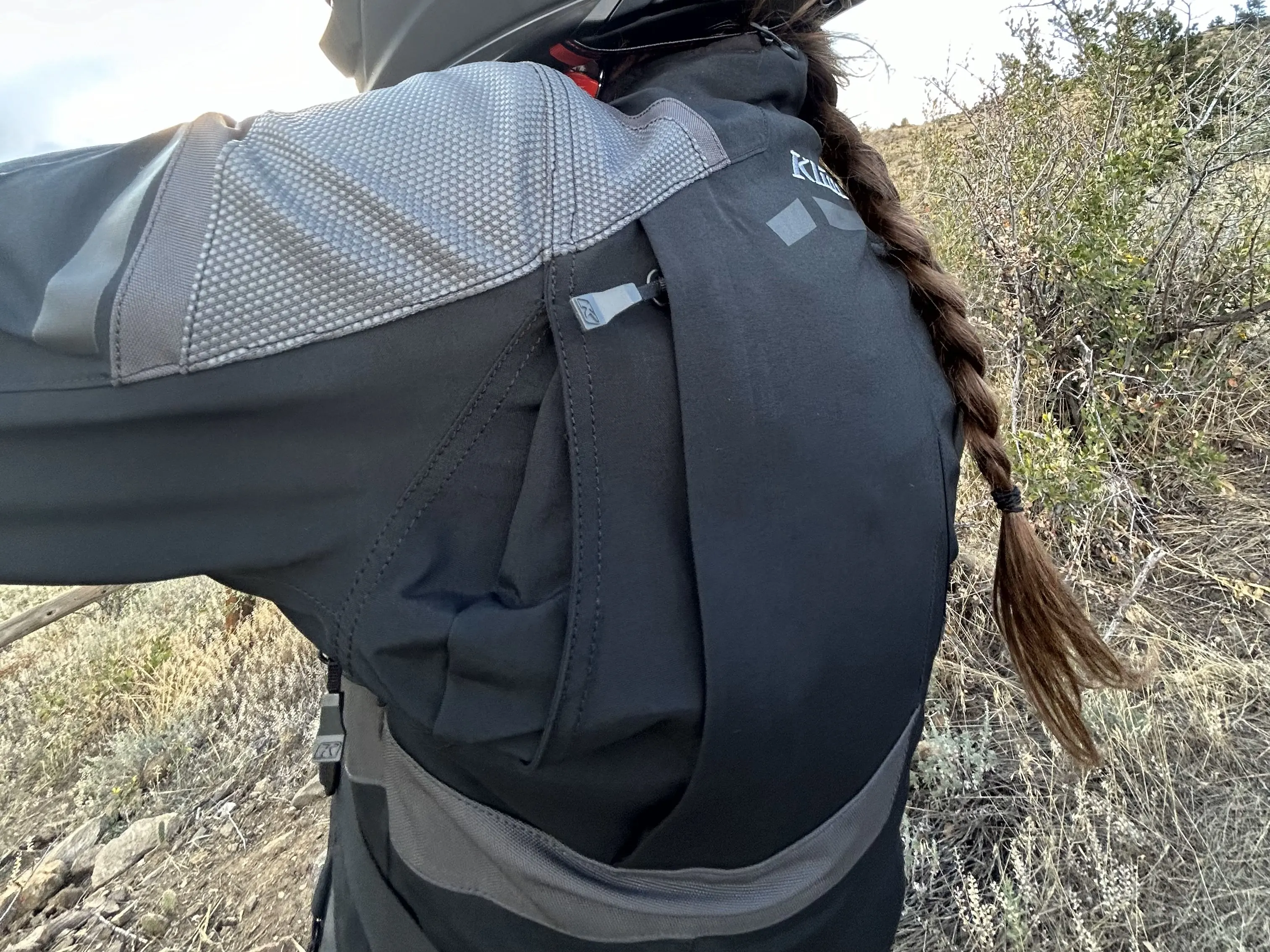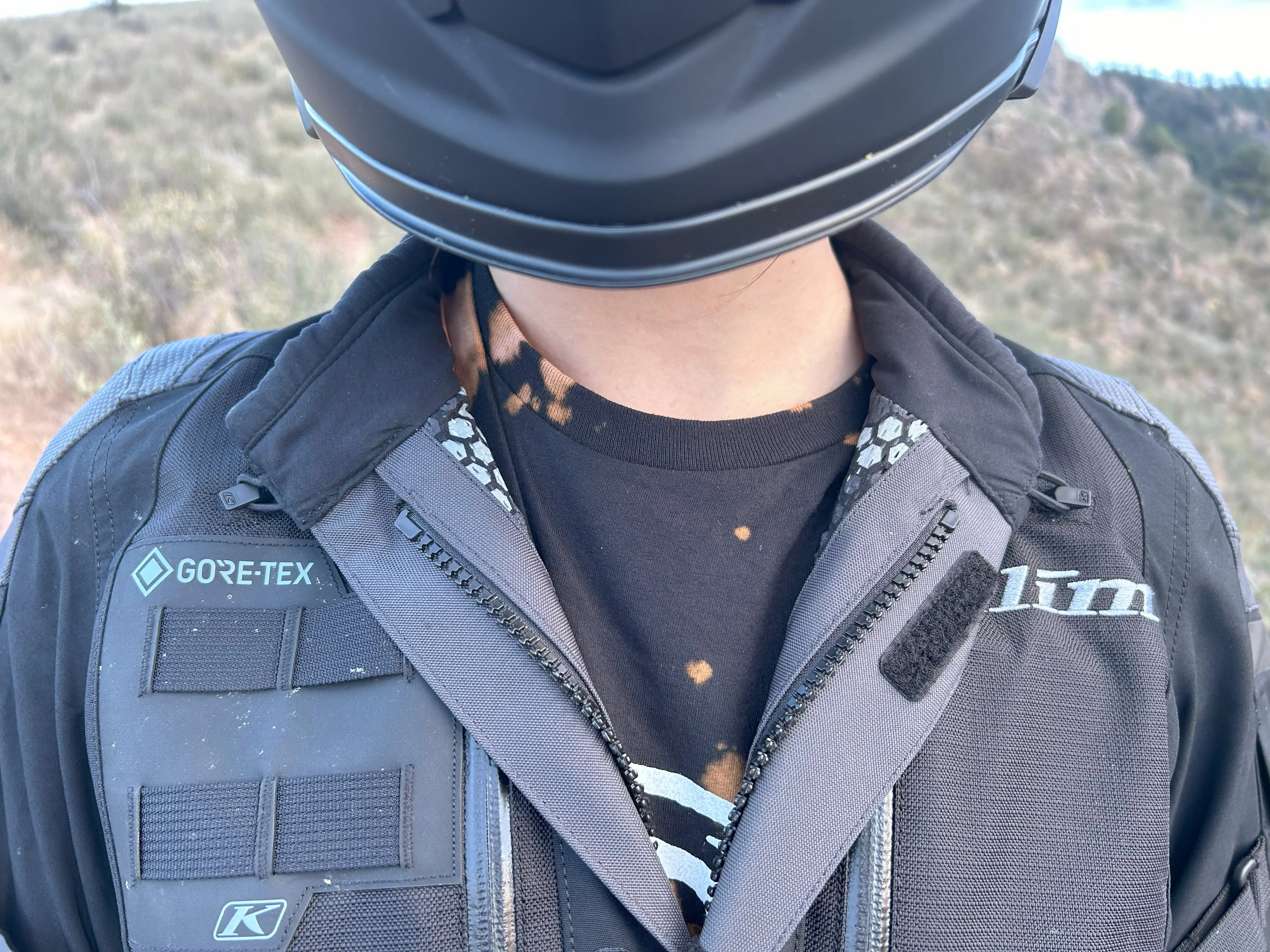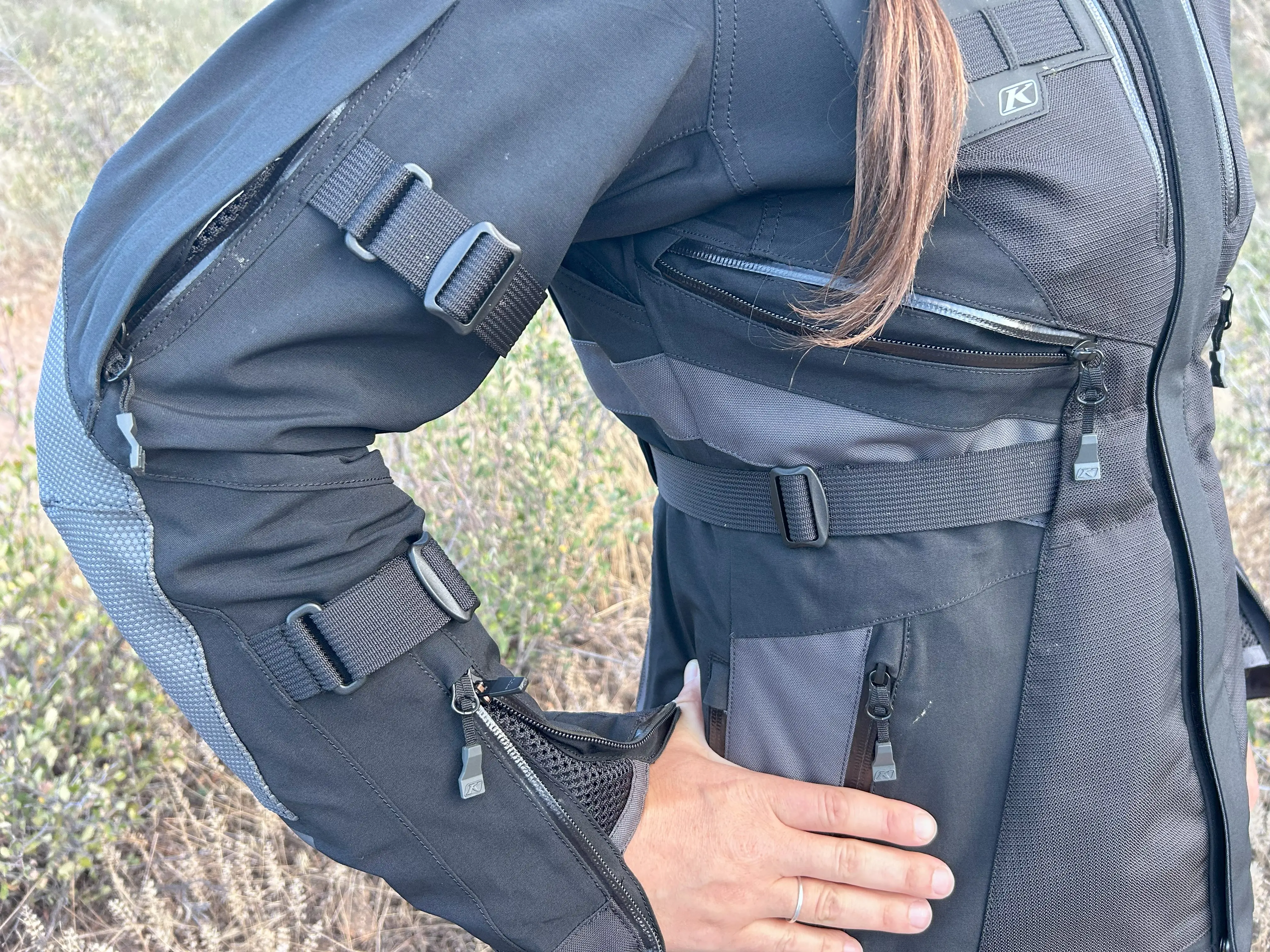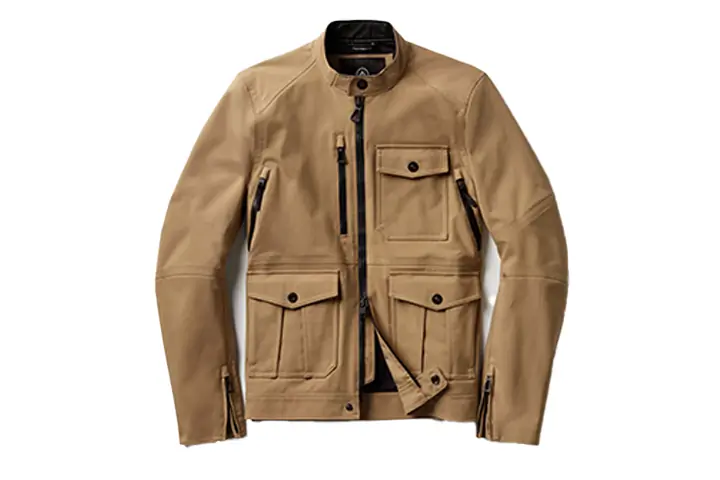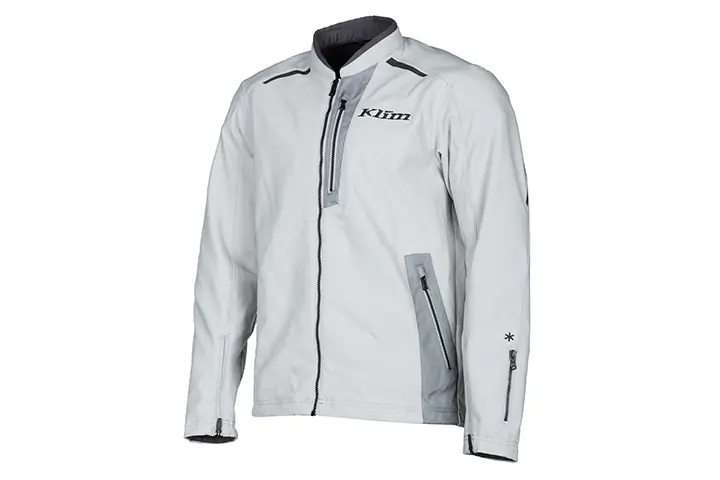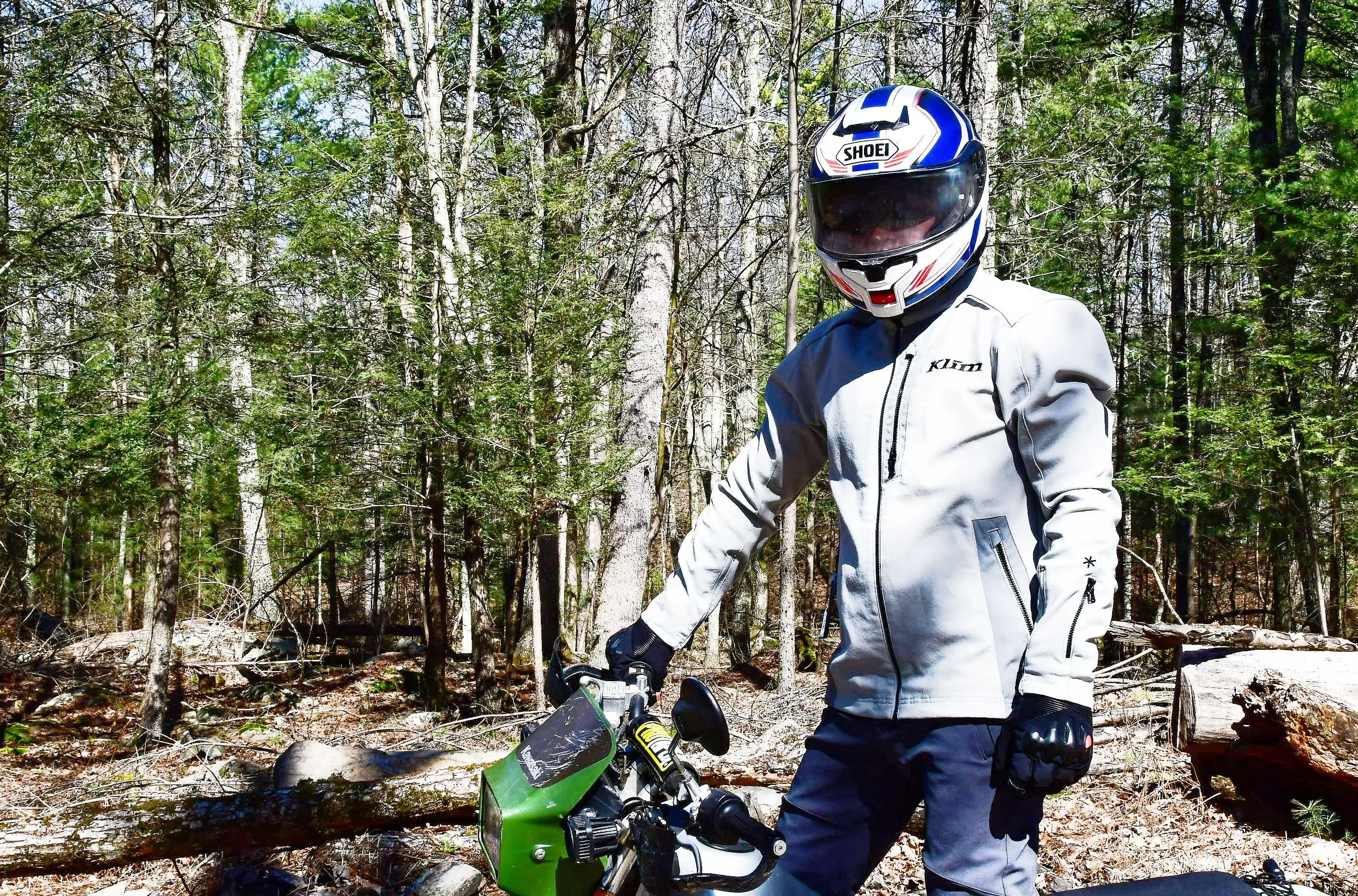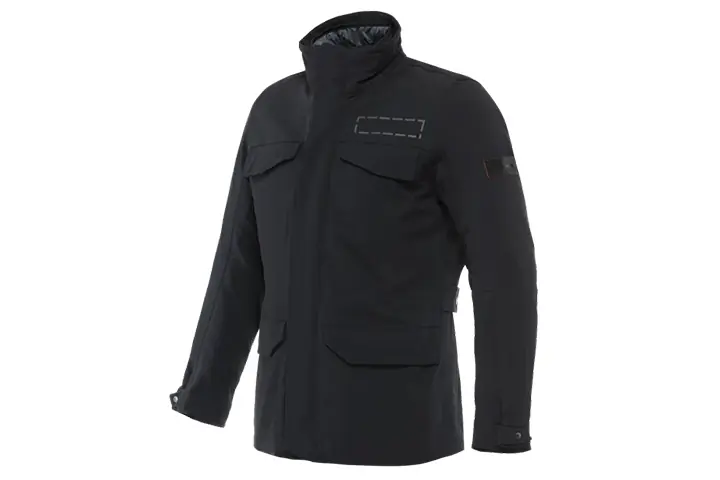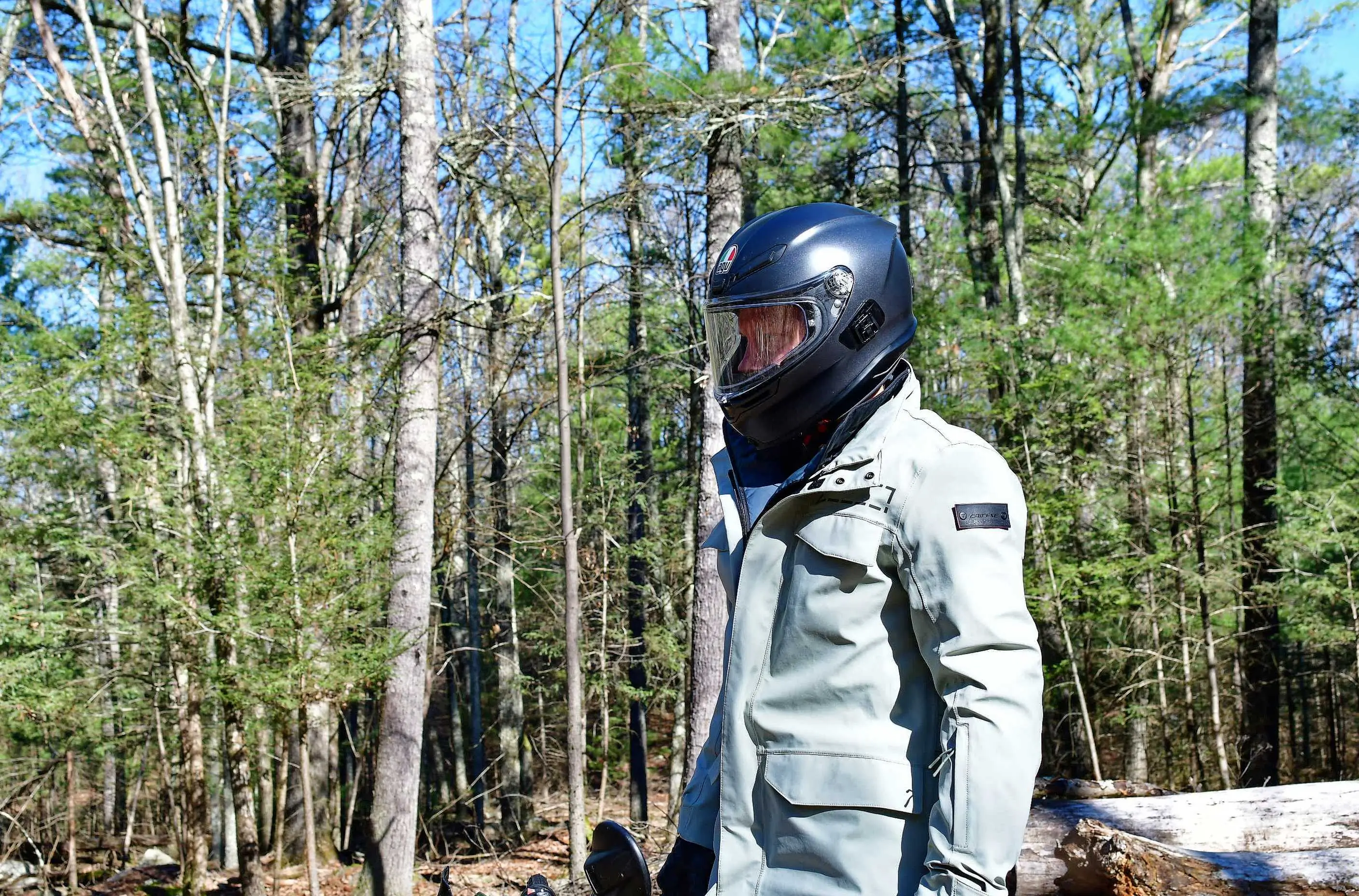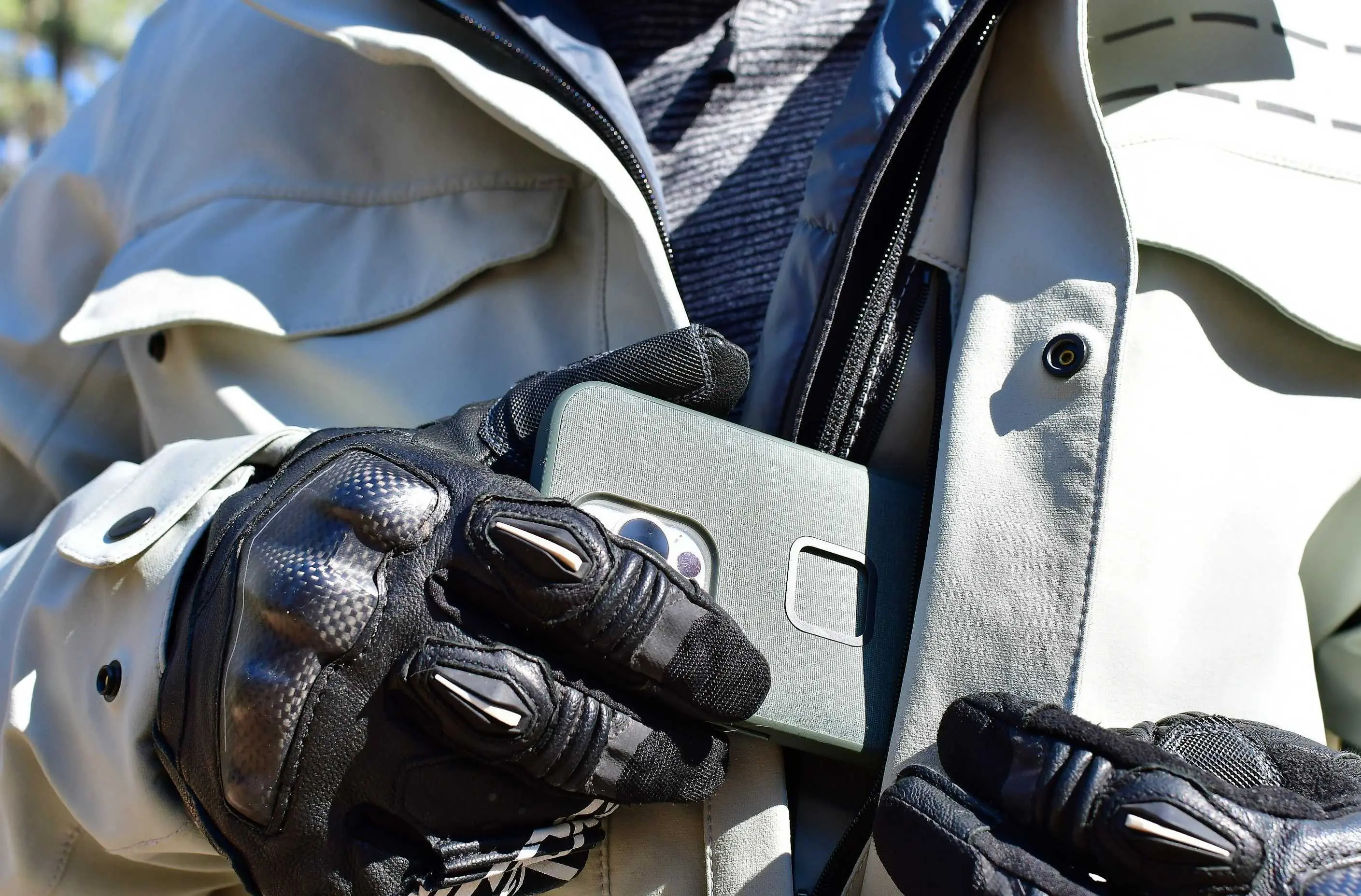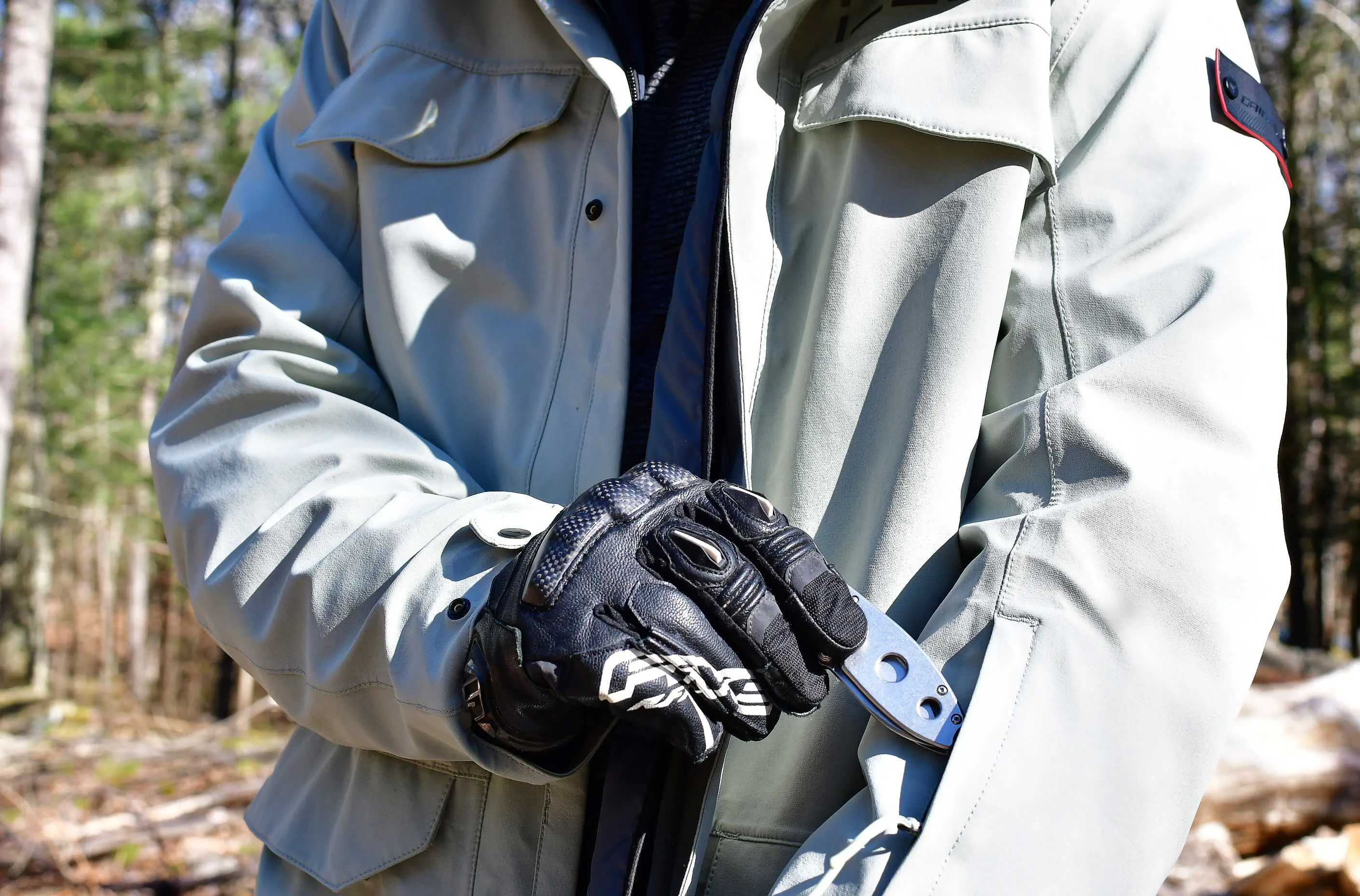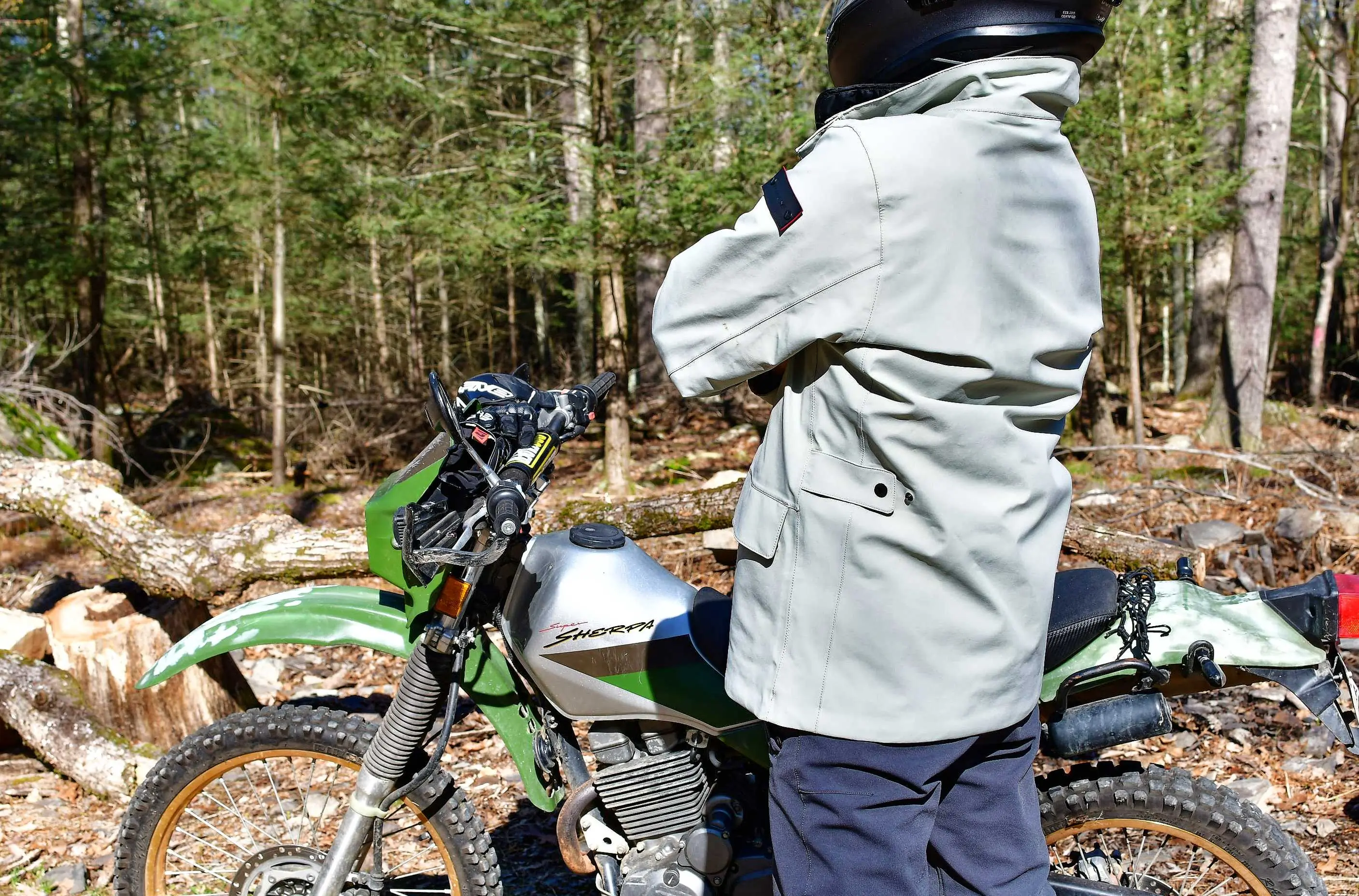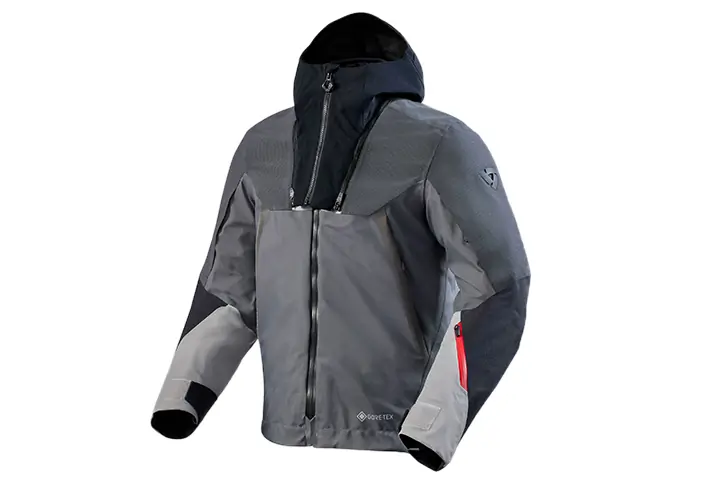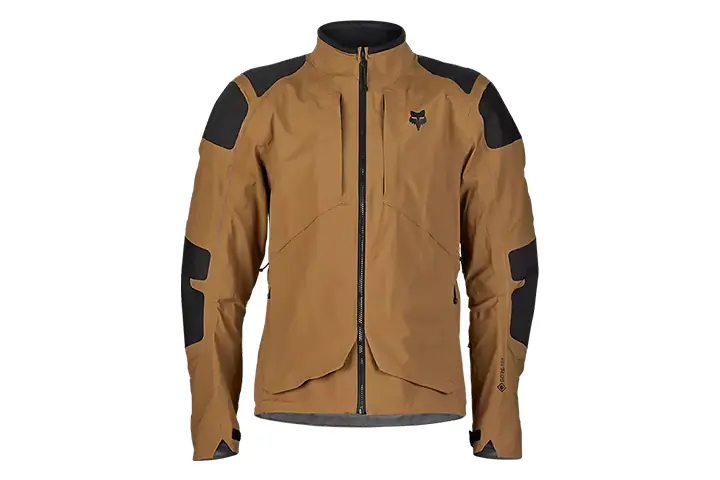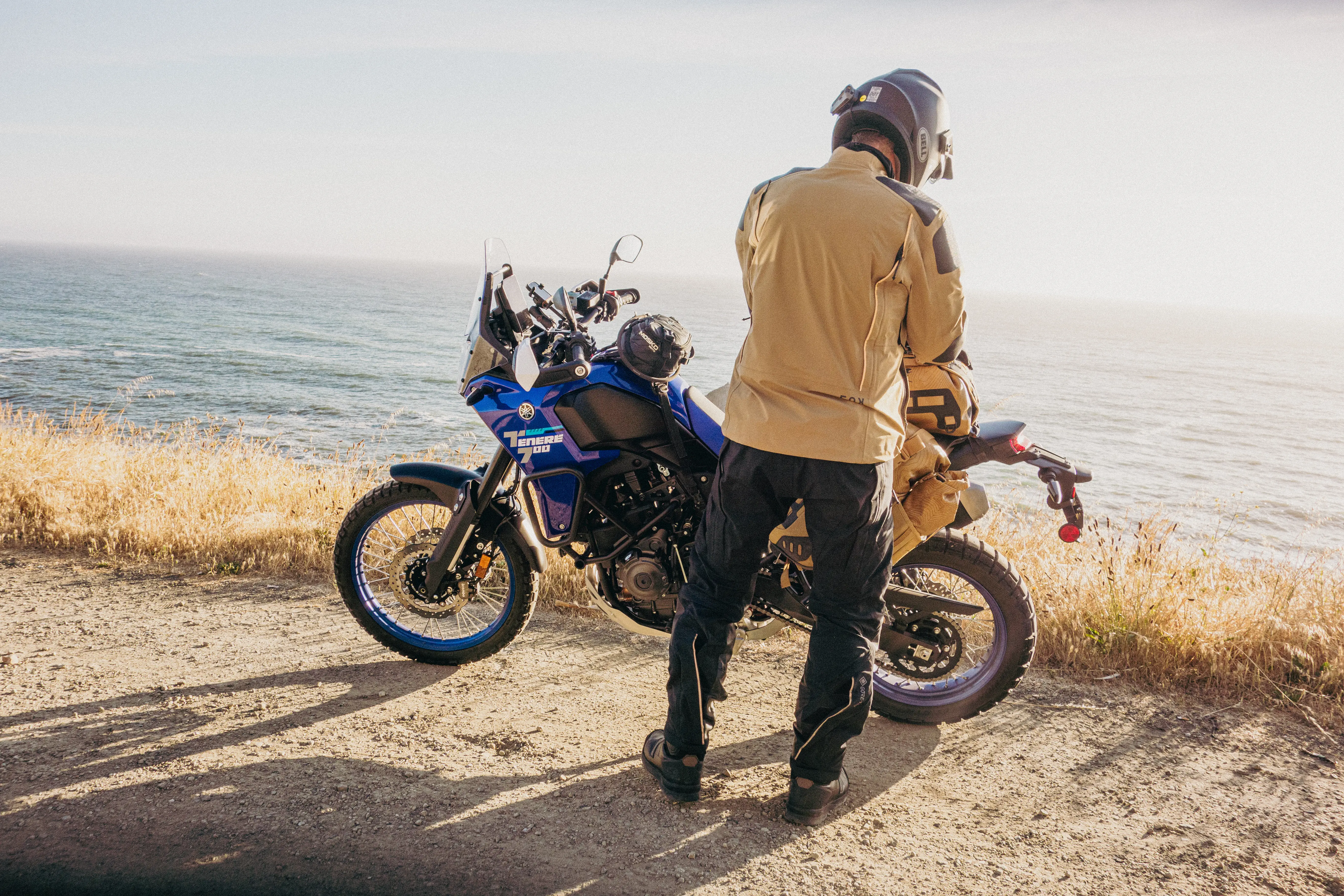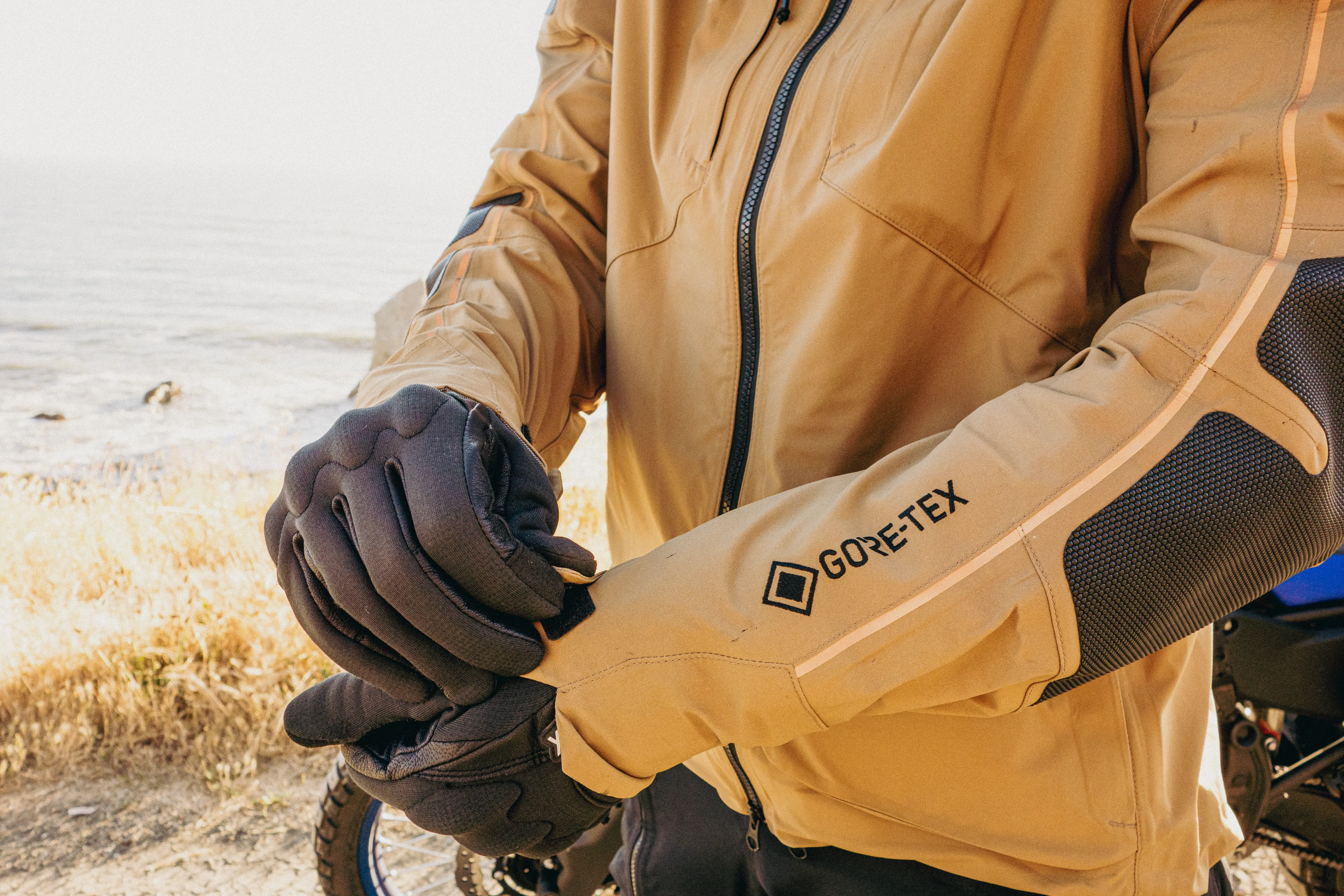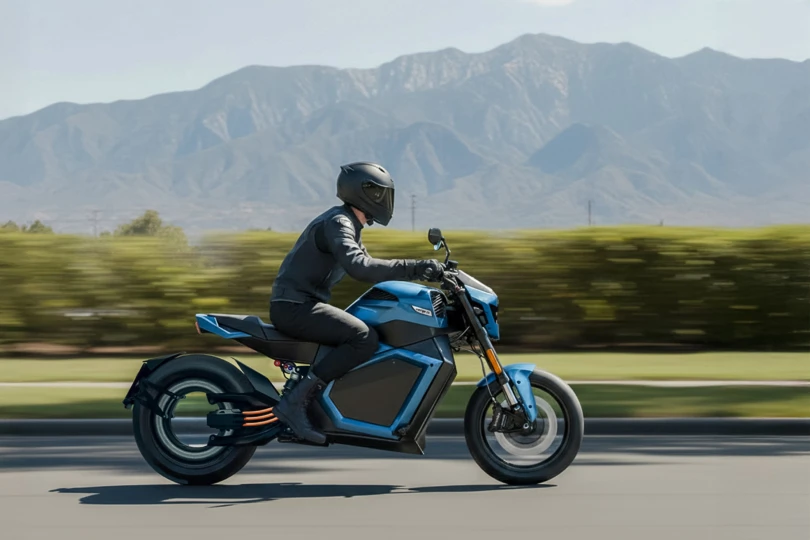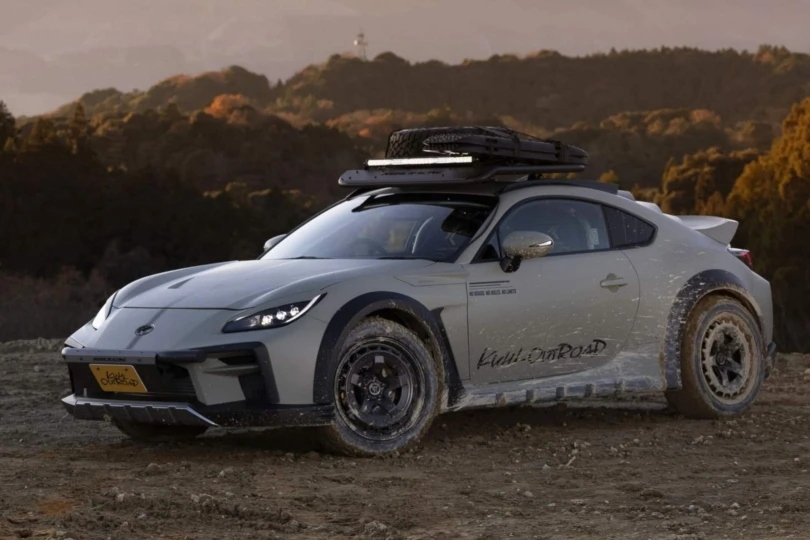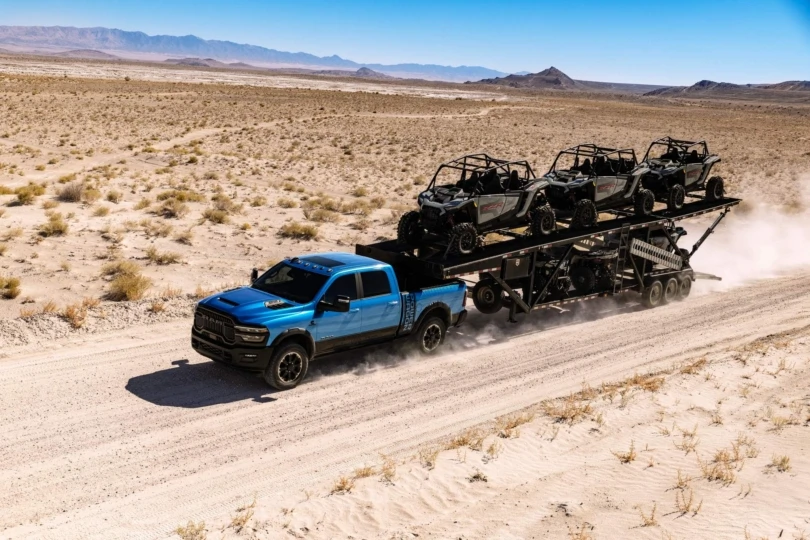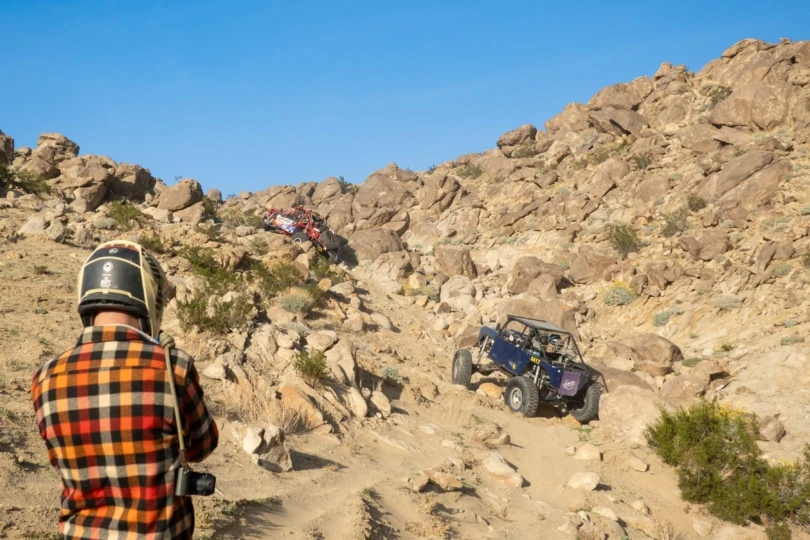If you ride, you know no motorcycle jacket is perfect for all weather conditions. The best moto jackets have optional integrated layers or allow you to layer beneath. We also like jackets with style in addition to function.
For the guide, we leaned more toward adventure (a.k.a. ADV) styles because they are adaptable and user-friendly across various applications, locations, and trips. We rode through rain, shine, heat, and dust to find the designs that kept us comfortable in the widest variety of conditions.
Most of our choice motorcycle jackets include armor, while some are intended as a layering piece for more demanding conditions. For instance, the premium Alpinestars AMT-10R Drystar XF Jacket offers versatility, storage, style, weatherproofness, CE‑certified AA protection, and CE Level 2 armor for long-haul adventure tours. For less than half the price, the REV’IT! Tornado 4 H2O has targeted CE Level 2 armor and a removable waterproof-breathable layer — but it lacks high-end abrasion materials and laminated membranes, airbag readiness, and heavy-duty touch points.
Most of our choices pass the minimum EU standards for slide and impact as stand-alone pieces, and some go well beyond that.
Editor’s Note: We updated our Motorcycle Jackets buyer’s guide on July 28, 2025, with the Alpinestars Pro-Dura Jacket, Fox Recon GORE-TEX ADV Jacket, and REV’IT! Stratum GTX.
The Best Motorcycle Jackets of 2025
Alpinestars AMT-10R Drystar XF Jacket
- Materials: Kevlar slide protection; laminated 2.5L DrystarXF waterproof-breathable membrane
- Protection: CE Level 2 armor, AA rating
- Best use: Touring, ADV
Pros
- Hydration sleeve and storage in rear panel
- Converts to a half-mesh jacket for summer rides
- Spine, shoulder, and elbow armor with leather reinforcements in slide zones
Cons
- Heavy
REV’IT! Tornado 4 H2O
- Materials: Hypalon with Hydratex waterproof-breathable membrane liner; thermal liner
- Protection: CE Level 2 armor at shoulders and elbow, AA rating
- Best Use: Touring
Pros
- 3-in-1 jacket
- Insane breathability with both interior layers removed
- Comfy piece no matter the configuration
Cons
- Relatively heavy
- Spine protector not included (but there is a sleeve for one)
KLIM Women’s Artemis Jacket
- Materials: GORE-TEX Performance waterproof membrane, Cordura reinforcements, SuperFabric ceramic print overlays in elbows and shoulders
- Protection: CE Level 1 D30 armor, AA rating
- Best Use: ADV, Touring
Pros
- Plenty of ventilation
- Comfortable
- Great adjustability
Cons
- Waterproof vent zips can be hard to operate while riding
- Velcro at the neck can nag if not perfectly placed
Mosko Moto Surveyor Soft Shell Jacket
- Materials: 4-way stretch Cordura softshell, flow through ventilation, articulated fit over armor, anit-microbiral anti-stink treatment
- Protection: N/A
- Best Use: Off Road, ADV
Pros
- Lightweight and packable
- Incredibly comfortable
- Surprisingly durable
Cons
- No armor included
Aether Mulholland
- Materials: Nylon and waterproof-breathable membrane
- Protection: CE Level 1 D3O Ghost armor at shoulders, spine, and elbow; A rating
- Best Use: Touring, City
Pros
- Beautiful tailoring makes it perfect for city riders
- Lined pockets won’t scratch shades
- Muted color palette looks street casual
Cons
- CE Level 1 rather than Level 2 armor
- Could breathe better
KLIM Marrakesh
- Materials: 1000-denier Karbonite Cordura stretch-woven with hydrophobic coating
- Protection: CE Level 1 D3O armor at shoulders, spine, and elbow; AA rating
- Best Use: City, Touring
Pros
- Best breathability
- Six sizes available
- Smart Napoleon pocket design
Cons
- You’ll be cold if the temps drop
- Could use a two-way front zip
Dainese Sheffield D-Dry
- Materials: D-Dry waterproof-breathable membrane
- Protection: CE Level 1 armor at shoulders and elbow, A rating
- Best Use: City or commuting
Pros
- Very lightweight
- Longish cut keeps rain off, even during storms
- Comes with zip-in insulation
Cons
- Spine protector not included (but there is a sleeve for it)
- Level 1 rather than Level 2 armor
Other Motorcycle Jackets We Accelerate With
- Materials: 3L GORE-TEX nylon 400D, PWR Shell stretch mesh, 3l GORE-TEX Pro Armacor Fabric, 3L nylon 200D Gore-Tex fabric.
- Protection: Shell: level B CE-certified. Air Mesh layer: level AA CE-certified. (Back, elbow, and shoulder armor)
- Best Use: ADV
Pros
- 2-jackets in one
- Premium materials
- Fantastic fit
Cons
- Very expensive
- Bulky shell layer
- Materials: GORE-TEX 3-layer stretch, SuperFabric at high impact zones, D30 protection,
- Protection: D30 back, shoulder, elbow (CE certified to EN 17092-4:2020 "A", EN 1621-1, and EN 1621-2)
- Best Use: Off Road, ADV
Pros
- High-end details
- Top-notch Construction
- Great style
Cons
- Vents inoperable while riding
- Materials: Ripstop 600D fabric, DWR coating, soft lined collar, shock cord adjuster at hem
- Protection: N/A
- Best Use: Off Road, Enduro, Trail
Pros
- Detachable sleeves
- Hydration compatible
- Great fit
Cons
- No armor included
- No stretch
Motorcycle Jackets Comparison Chart
Scroll right to view all of the columns: Price, Materials, Protection, Best Use.
| Motorcycle Jackets | Price | Materials | Protection | Best Use |
|---|---|---|---|---|
| Alpinestars AMT-10R Drystar XF Jacket | $900 | Kevlar slide protection; laminated 2.5L DrystarXF waterproof-breathable membrane | CE Level 2 armor, AA rating | Touring, ADV |
| REV’IT! Tornado 4 H2O | $370 | Hypalon with Hydratex waterproof-breathable membrane liner; thermal liner | CE Level 2 armor at shoulders and elbow, AA rating | Touring |
| KLIM Women’s Artemis Jacket | $770 | GORE-TEX Performance waterproof membrane, Cordura reinforcements, SuperFabric ceramic print overlays in elbows and shoulders | CE Level 1 D30 armor, AA rating | ADV, Touring |
| Mosko Moto Surveyor Soft Shell Jacket | $250 | 4-way stretch Cordura softshell, flow through ventilation, articulated fit over armor, anit-microbiral anti-stink treatment | N/A | Off Road, ADV |
| Aether Mulholland | $650 | Nylon and waterproof-breathable membrane | CE Level 1 D3O Ghost armor at shoulders, spine, and elbow; A rating | Touring, City |
| KLIM Marrakesh | $420 | 1000-denier Karbonite Cordura stretch-woven with hydrophobic coating | CE Level 1 D3O armor at shoulders, spine, and elbow; AA rating | City, Touring |
| Dainese Sheffield D-Dry | $215 | D-Dry waterproof-breathable membrane | CE Level 1 armor at shoulders and elbow, A rating | City, Commuting |
| Alpinestars Pro-Dura Jacket | $255 | Ripstop 600D fabric, DWR coating, soft lined collar, shock cord adjuster at hem | N/A | Off Road, Enduro, Trail |
| Fox Recon GORE-TEX ADV Jacket | $1,050 | GORE-TEX 3-layer stretch, SuperFabric at high impact zones, D30 protection | D30 back, shoulder, elbow (CE certified to EN 17092-4:2020 “A”, EN 1621-1, and EN 1621-2) | Off Road, ADV |
| REV’IT! Stratum GTX | $1,400 | 3L GORE-TEX nylon 400D, PWR Shell stretch mesh, 3l GORE-TEX Pro Armacor Fabric, 3L nylon 200D Gore-Tex fabric. | Shell: level B CE-certified. Air Mesh layer: level AA CE-certified. (Back, elbow, and shoulder armor) | ADV |

How We Tested Motorcycle Jackets
Our Expert Testers & Testing Grounds
GearJunkie contributor Sean Galaway leaned on his experience riding across continents to evaluate jackets in the off-road end of the spectrum. He focused on ADV and enduro-style jackets that work as a key part of a layering system for maximum versatility during multi-week off-road adventures.




Rider Hilary Arthur took a 1,100-mile trip through Southern Colorado, putting the KLIM Artemis to the ultimate touring test. The varied conditions of mountainous and highway riding allowed abundant time to assess the features and functionality of a riding jacket.
Tester Michael Frank pulled on these motorcycle jackets over the course of hundreds of miles of canyon carving, city crawls, and Interstate blasts. Throughout our testing, the weather ranged from chilly and freezing to muggy. Frank also rode at various paces and scored the usability of the pockets and zippers. He also checked the ventilation and insulation systems for each jacket, as well as the fit and adaptability across temperature ranges.




Our Testing Process
A top priority was finding motorcycle jackets that provide comfort and ease of use. We prefer to wear fabrics that provide freedom of movement. Our top choices usually carry Level 1 or Level 2 protection. Better versions of armor, such as on the D3O Ghost armor in the Aether Mulholland, felt more comfortable because the material is a bit softer, and the build is less restricting.
Moto jackets were tested for versatility and adjustability, such as whether a liner was removable or a layer could be added beneath. We also paid attention to the strength of zippers and snaps and whether the rider could keep their gloves on to operate the jacket.
For pockets, we tested each one with all the goods we typically carry on a ride: shades, wallet, keys, ear protection, phone, earbuds, and snacks.
Leaning into our field tests and personal experience, we determined the best jackets for ADV riders for both hot weather and rain. We also found a few single-quiver options that work for most ride days and moderate weather.
Some motorcycle jackets didn’t make the cut. The ones left off the list were too bulky, lacked adequate armor, or were simply uncomfortable.




Buyer’s Guide: How to Choose a Motorcycle Jacket
Types of Motorcycle Jackets
The type of motorcycle jacket you need greatly depends on the terrain you ride. If you’re commuting on the Interstate, your needs will differ from someone riding technical single track off-road.
There are as many motorcycle jackets as there are motorcycles and riding styles. Our focus here is largely on jackets that can be the most versatile. Our guide comprises motorcycle jackets for everyday street/cruiser, sport, touring, and adventure/dual-sport rides. These jackets lean more into textiles than leather.
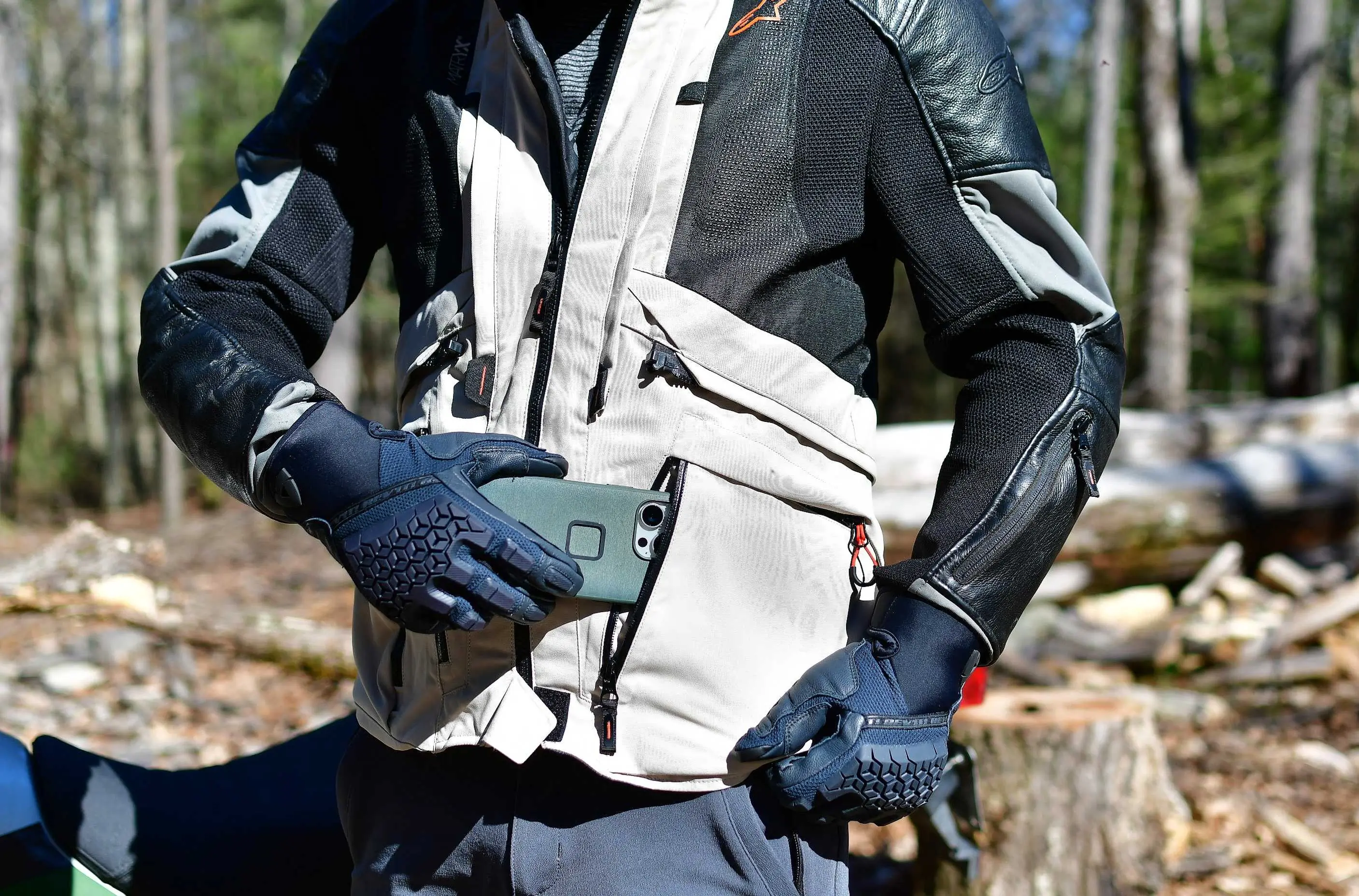



Adventure (ADV) Jackets
Adventure jackets are the most versatile motorcycle jackets on the market.
The best designs have a suite of features that can cover you on any type of terrain: from highway miles to technical offroad riding. ADV jackets have a ton of features: from waterproof exterirois, to ample vents, to separate integrated layers that either zip or snap into the exterior layer to help keep you warm.
Those layers can be removed depending on the weather conditions and season. Adventure jackets allow for modification as the weather shifts, including ventilation ports. You will appreciate that versatility if you’re touring on a multiday trip.
A couple of great examples of jackets in this category include the Alpinestars AMT-10R Drystar XF Jacket, KLIM Artemis, and the REV’IT! Tornado 4 H2O.




Cruiser/Street Jackets
Cruiser or street jackets tend to be lighter weight, like the Aether Mulholland, and we like using these on city rides.
These designs are still armored and include weather protection so you don’t get soaked on your commute. These jackets typically have a robust outer layer to protect against falls on tarmac.
This type of jacket is also discreet and streamlined, so you can walk around town and not look like you’re in the middle of riding across a continent. You don’t really want a bulky ADV coat for this duty.




Use-Case Specific Motorcycle Jackets
There’s an argument for one jacket that can do it all — but the more we ride the more we believe that having a dialed layering system is the way to go, especially on multi-week adventure rides.
The Mosko Moto Surveyor is a great example of a jacket that is less versatile on its own, but an excellent addition to a layering system when paired with base layer armor and a lightweight waterproof shell. We wish we had used a jacket like this on our rides across Africa or Europe as it provides a much more versatile system than relying on one jacket to do it all. It’s also a great layer for chilly and dry mornings in Baja.
With that said, jackets like Dainese Sheffield D-Dry are waterproof for rainy weather and are a good choice if you live in a wet and cold climate like Portland, Oregon, or Boston.
Alternatively, the Klim Marrakesh is a great option for riders who commute in Phoenix or Miami. You know where and how you ride, so pick a jacket that will meet your specific needs.




Pockets
Pocket placement is key for easy access and overall functionality. The ergonomics and shape of the pockets also influence how easy it is to use them with moto gloves on.
Here are a few examples of common pocket placements:
- Exterior chest pockets: these can be great for storing your phone for quick and easy access when riding.
- Interior chest pockets: we typically keep our ID and/or credit cards stashed in interior pockets so we always have these essentials on hand and tucked away.
- Exterior front pockets: These are found on any jackets, like the Aether Mulholland. We dump a beanie, hat, or snacks in these large style pockets for quick access when getting off the bike. A similar pattern is on the Dainese Sheffield D-Dry, so you can easily enter the pocket.
- Lumbar pockets: Many jackets offer lumber pockets with a zip or snap closure (we like zips in the back). We’ve stashed gloves, rain layers, and hydration bladders in this style of pocket.
- Pockets on the arms: Some jackets even have zippered pockets in the arms — another great place to stash an ID or credit card.




Zippers & Adjusters
The beefier the zippers, the better. The last thing you want is a broken zipper when you’re riding. The REV’IT! Tornado 4 H2O zips are oversized with big teeth, for instance. We found that these zippers engage well, stay put, and set a benchmark for durability.
For single-layer designs that provide integrated waterproof protection like the KLIM Artemis, the zippers themselves are waterproof. This allows for a reduction in flaps and closures, or separate waterproof layers, but they can more difficult to operate while riding.
On jackets like the REV’IT! Tornado 4 H2O and KLIM Artemis, you’ll find sliding adjusters on the forearm, which cinch down the sleeves. That integrated arm belt alters the volume. When you’re gripping the handlebars, a streamlined fit can help reduce fatigue, because the fabric isn’t shifting around. An athletic fit also holds the armor at the elbows and shoulders in place during a crash.
Lower on a sleeve, some jackets have zippers that tighten up the circumference of the cuff, too. That detail prevents wind from blowing up your sleeve or opens up to allow more in if you’re needing some airflow.




Integrated Layers & Waterproofing
If you need to wear a waterproof layer at all times, we prefer moto jackets with waterproof-breathable membranes to internal waterproof liners.
Often motorcycle apparel companies design jackets with internal rain protection. The idea is that you zip a waterproof liner inside your jacket, and it rests atop a base layer. During testing, we found this usually leads to a soaked exterior, which becomes heavy and the inside of the jacket becomes clammy. We suggest purchasing a motorcycle jacket with an external layer that is waterproof and not the other way around.
With that said, unless you are riding in consistently rainy or cold weather, employing a layering system will keep you more comfortable than running a waterproof shell 100% of the time.
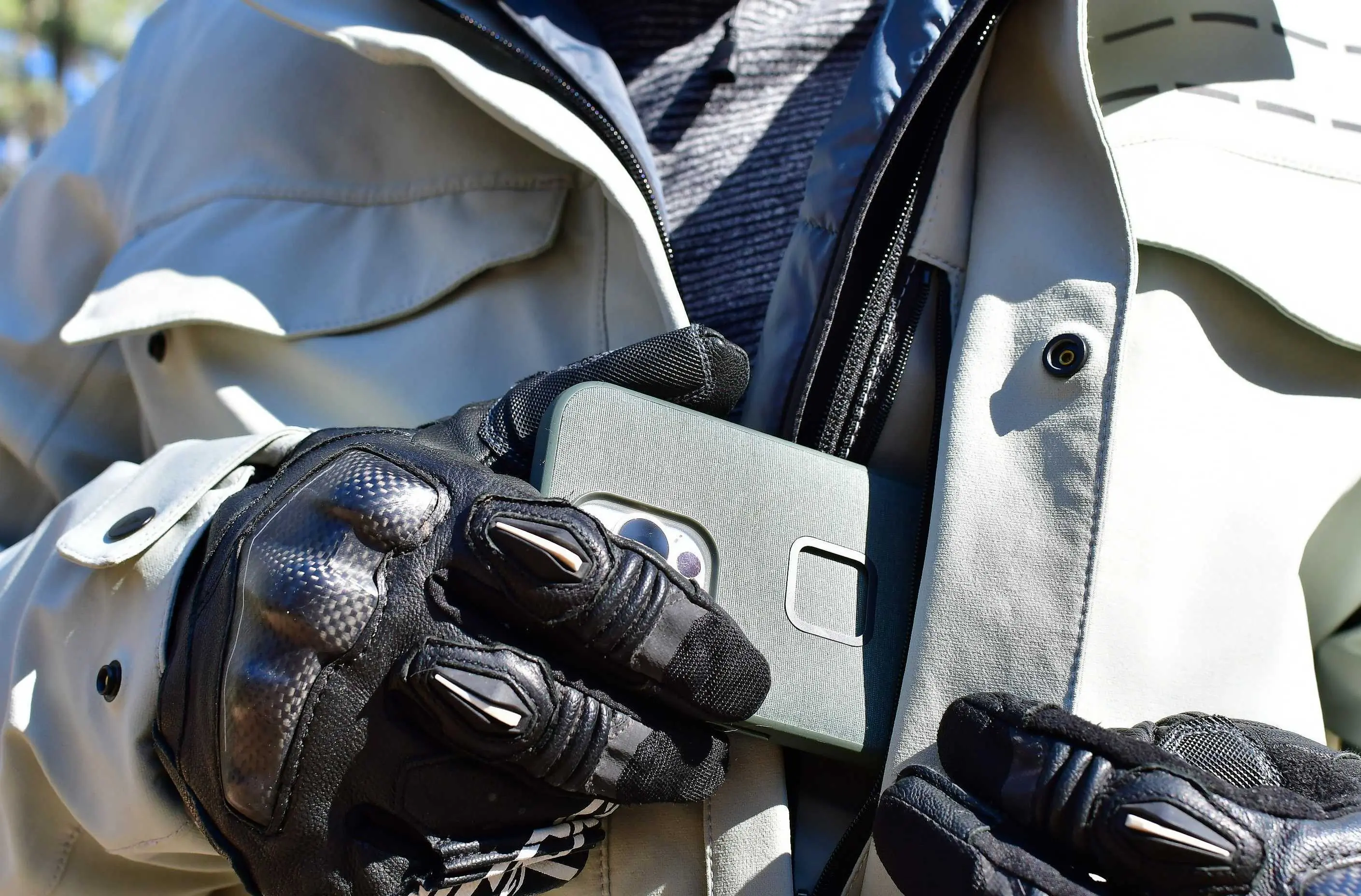



Two jackets with integrated and removable layers include the Alpinestars AMT-10R Drystar XF Jacket and the REV’IT! Tornado 4 H2O. The Tornado 4 H2O includes a rain layer that can be zipped inside the jacket for windproofing or on top of the exterior face fabric for waterproofness. We dig that type of versatility, but it’s unique in this apparel category.
Otherwise, we tend to pick a jacket that’s built to fit aftermarket layers beneath. You might want midlayers for warmth or to invest in an airbag vest.
When trying on the coat or buying one online, think about layering before selecting the size.




Breathability & Ventilation
We also prefer fabrics with a waterproof-breathable membrane because they breathe while providing protection. Typically, zip-in liners do not breathe as well.
Jackets with zippered pits, chest vents, and back or exit vents behind the shoulder blades like on the Aether Mulholland are great choices for breathability. Some zippers have a mesh overlay inside, including the Alpinestars AMT-10R Drystar XF Jacket and KLIM Artemis.
We see it as a downside when a jacket doesn’t have venting, like the Dainese Sheffield D-Dry, but that style of jacket is also made to be a beast for rainy, cooler weather. You likely wouldn’t find that jacket comfortable in rainy and warmer weather like the monsoon season in Mumbai.
In contrast, the KLIM Marrakesh is like wearing a screen door: It’s all mesh.
Ultimately, ventilation and breathability are crucial for hot-weather motorcycle rides, so we suggest making a purchase based on your most common use case versus buying the most expensive option with bells and whistles that aren’t applicable to your riding style and environment.




Safety Certifications
The European Union rates armoring and slide protection in motorcycle jackets via CE, which stands for Conformité Européene. For apparel, the CE includes three categories of classification for apparel that has protection against impact and abrasion: A, AA, and AAA.
- Class AAA: Highest level of protection for impact and abrasion; potential limitations regarding ergonomics, weight, and thermal power
- Class AA: Mid-tier protection from impact and abrasion; better ergonomic and weight than Class AAA garments
- Class A: Meet the minimum protection requirements for impact and abrasion; more malleable and lighter than other classes
Class B classifications offer protection against abrasion, while Class C includes exterior and interior impact protection.
The impact protectors are also rated at Level 1 or Level 2, with the latter being stronger.
The EU measures tear strength and abrasion resistance, as well as the impact force.
That testing also includes tear resistance and seam strength.
The elbows, shoulders, knees, and sections of the back need to be built to withstand a slide for up to four seconds without structural damage for Level 1 ratings and up to seven seconds for the Level 2 cert.
You’ll want certified slide and impact protection for a motorcycle jacket because that shield is critical to being as safe as possible on the road.




Pads & Armor
Many jackets come with safety features that you hope you never use, but if you’ve ever crashed on your motorcycle – then you know how vital these features are when you need them. Abrasion-resistant outer materials are key to protecting you from road rash, regardless of if you’re actually riding on the road.
Pads and armor have come a long way over the last decade. We are glad that the days of hard and uncomfortable armor are long gone. Current armor from leading companies like D30 and Seesmart provides an excellent solution that is integrated into many jackets in our guide. This type of armor is perforated for airflow which is welcomed on warm days and helps to cut down on weight.
Our favorite part? This type of armor remains extremely flexible until you need it – when it stiffens under impact. With specific pads for your spine, shoulders, elbows, and chest – we recommend wearing all the gear all the time because if you haven’t crashed on your motorcycle yet, you will one day.




Women’s Motorcycle Jackets
Lucky for the female rider the breadth of women’s specific riding gear is growing. Many companies are making men’s and women’s versions of the same models, and coming out with unique styles for women. In this guide the KLIM Artemis was tested in the women’s fit, but the same model is also available in men’s sizing.
The REV’IT! Tornado 4 H2O and KLIM Marrakesh are both available in women’s versions as well, while the other jackets on the list have comparable women’s models on the brand’s sites.
Women’s jackets often incorporate more tailored sizing or an hourglass shape to accommodate wider hips and larger busts. We love the KLIM Artemis and its perfectly placed chest vents, designed to funnel air directly to the right place.
For any rider with long hair, make sure you check for Velcro closures and anything that might snag your mane near the collar. Our biggest gripe is that women’s sizing tends to run small, limiting the choices for some riders.




Price & Value
Budget
Economic choices typically settle around the $200 zone. The Dainese Sheffield D-Dry ($215) is a less beefed-up build with Level 1 — not Level 2 — armor. But if that’s suitable for the riding and road risk you’re rolling on, this is a great jacket. Plus, this level of construction is typically lighter weight.
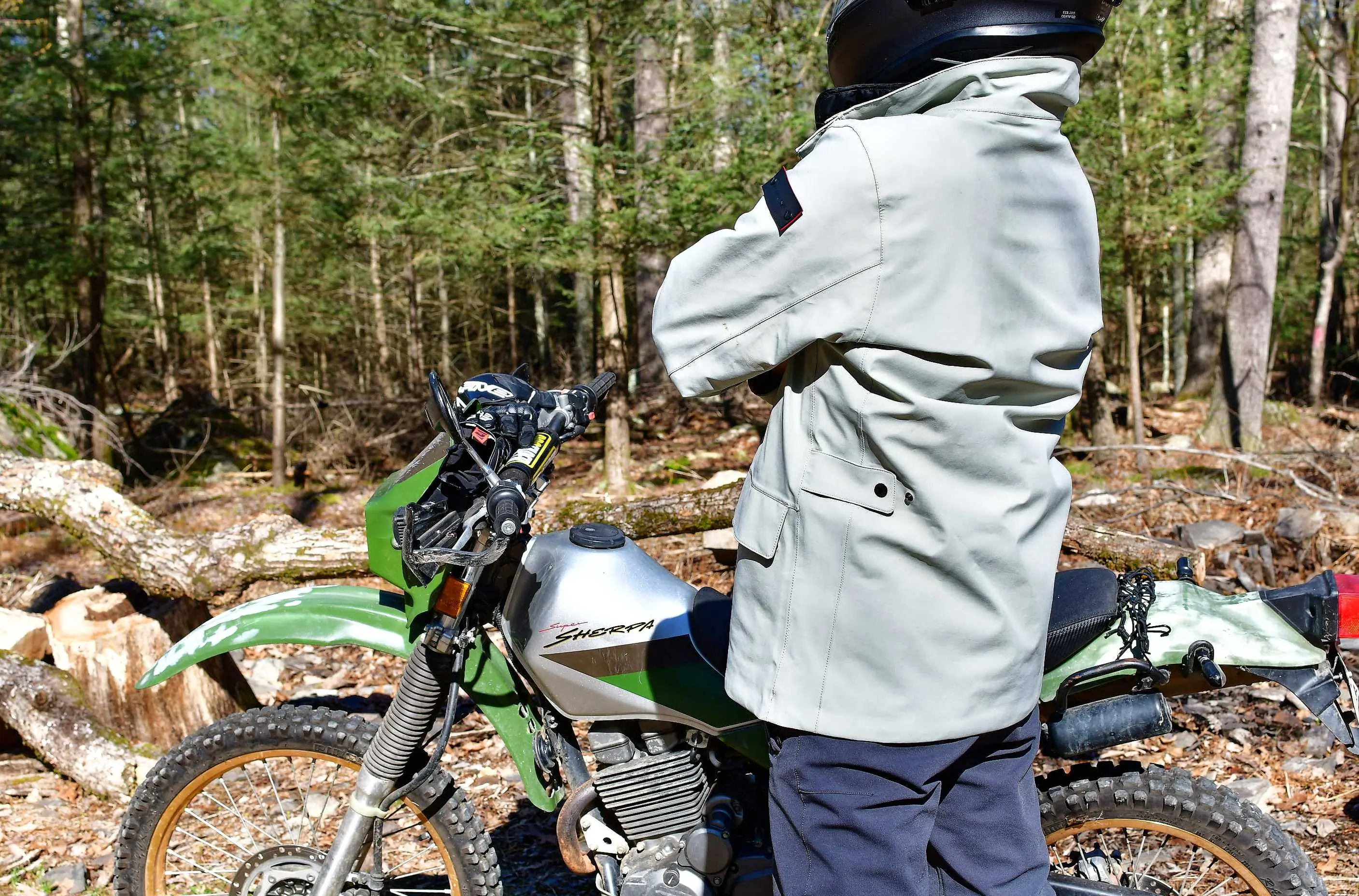



Mid-Tier
Hitting the halfway mark to a grand, the Aether Mulholland ($650) is nylon and has a waterproof-breathable membrane. This is the tier of jacket you’ll want to check out if you’ll be road-tripping through a myriad of weather conditions, including precipitation.
Premium
All the way up there is the Alpinestars AMT-10R Drystar XF Jacket ($900). This build dishes out the higher level of protection and quality of materials: Kevlar slide protection, a laminated 2.5L DrystarXF waterproof-breathable membrane, and CE Level 2 armor certification plus an AA rating. If you ride your motorcycle often, it could be worth investing in a premium jacket like this one.




Frequently Asked Questions
Motorcycle jackets need to be made specifically for riding. We advise finding a jacket with a CE Level 1 or 2 certification for armor plus an A or AA overall safety rating, at a minimum.
We suggest looking for a design that offers a range of weather protection. You should be able to fit layers of insulation beneath the jacket, or those layers should be integrated and included in the jacket design.
Look for jackets with a waterproof-breathable membrane to prevent you from getting soaked in a downpour without causing overheating on warmer days. Find jackets with ventilation, as well as enlarged zipper pulls for easier use and oversized pocket openings, so you can grab items while still wearing motorcycle gloves.




Leather is a popular choice for racing jackets. Often, Kevlar or other hard composites are integrated into a moto jacket for slide resistance. Other highly resistant materials include Cordura and Dyneema, which are developed to not reach a melting point during a motorcycle slide.
Your motorcycle jacket’s fit should be roomy enough for you to put layers on underneath. Some designs include arm adjusters.
Jackets with tons of armor can feel stiffer, which is why racers tend to wear those built-out designs, and more casual riders opt for a more flexible jacket.
Motorcycle airbags are becoming more common. If you intend to wear one beneath an armored jacket, look for a roomy coat to accommodate that extra layer and safety system.




The answer to this question will depend on many things, such as the type of riding, the yearly weather variations where you live and ride, and your personal preferences. Our testers in Colorado see big seasonal swings and recommend a super breathable summer jacket for those 100-degree days around town, and a touring-style jacket for the other seasons that can be coupled with adequate layers.
For extreme cold, you may even want to incorporate heated layers. It can be nice to have a stylish city jacket as well, but now we’re just being gluttons.
If you need to stick to a single jacket, we suggest something high-quality and versatile. Focus on aspects such as breathability, waterproofness, ample ventilation that can also be sealed, and the ability to layer insulation.


The Best GPS Trackers for Cars of 2025
We tested a variety of GPS trackers to find the best options for tracing vehicles, property, and loved ones. Here are our top picks.


Alpine Loop Backcountry Byway: An Off-Road Motorcycle Adventure Guide
Southwest Colorado’s remote Alpine Loop Backcountry Byway takes adventurers through remarkable historic sites and rugged, out-of-this-world scenery.













